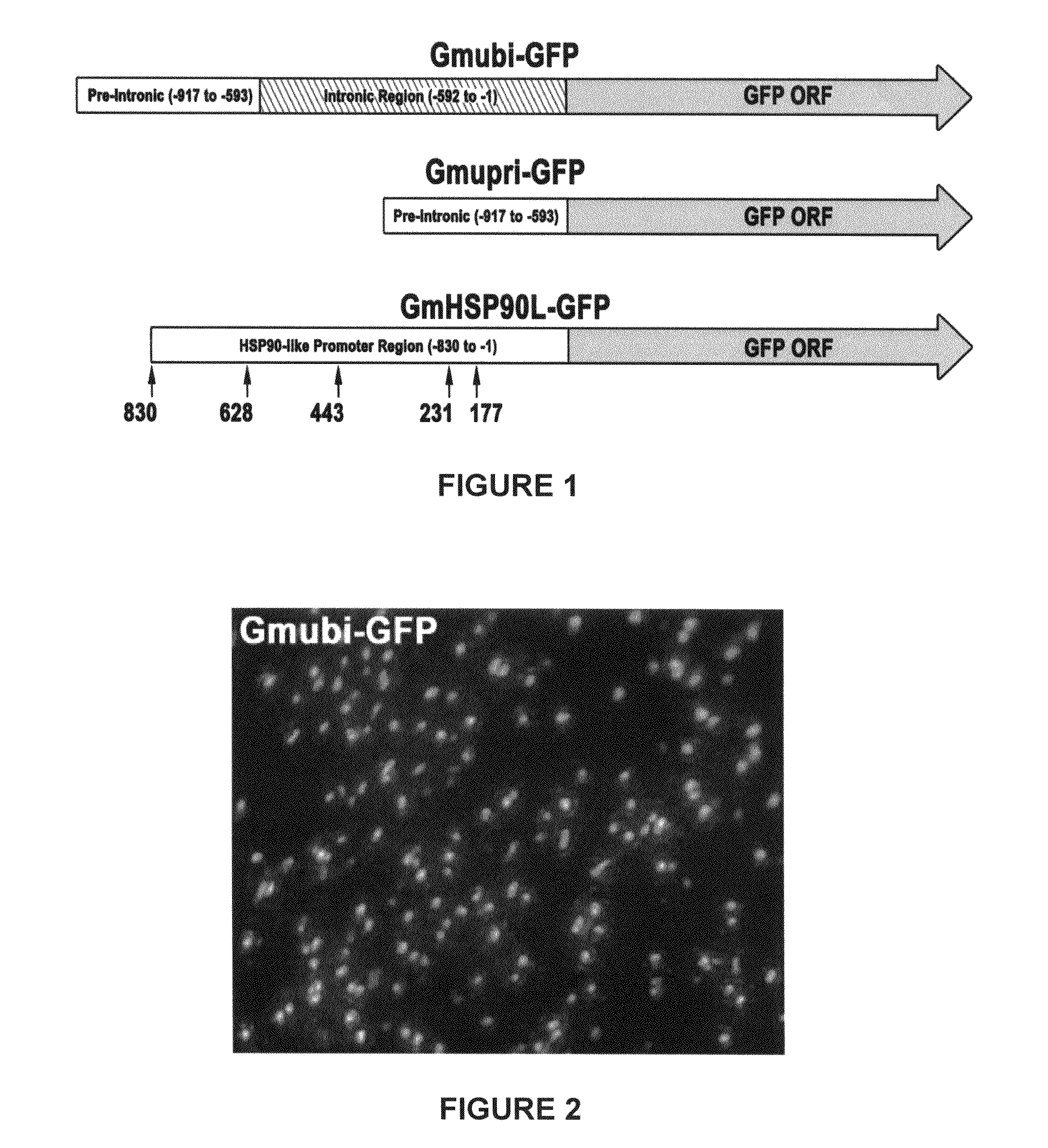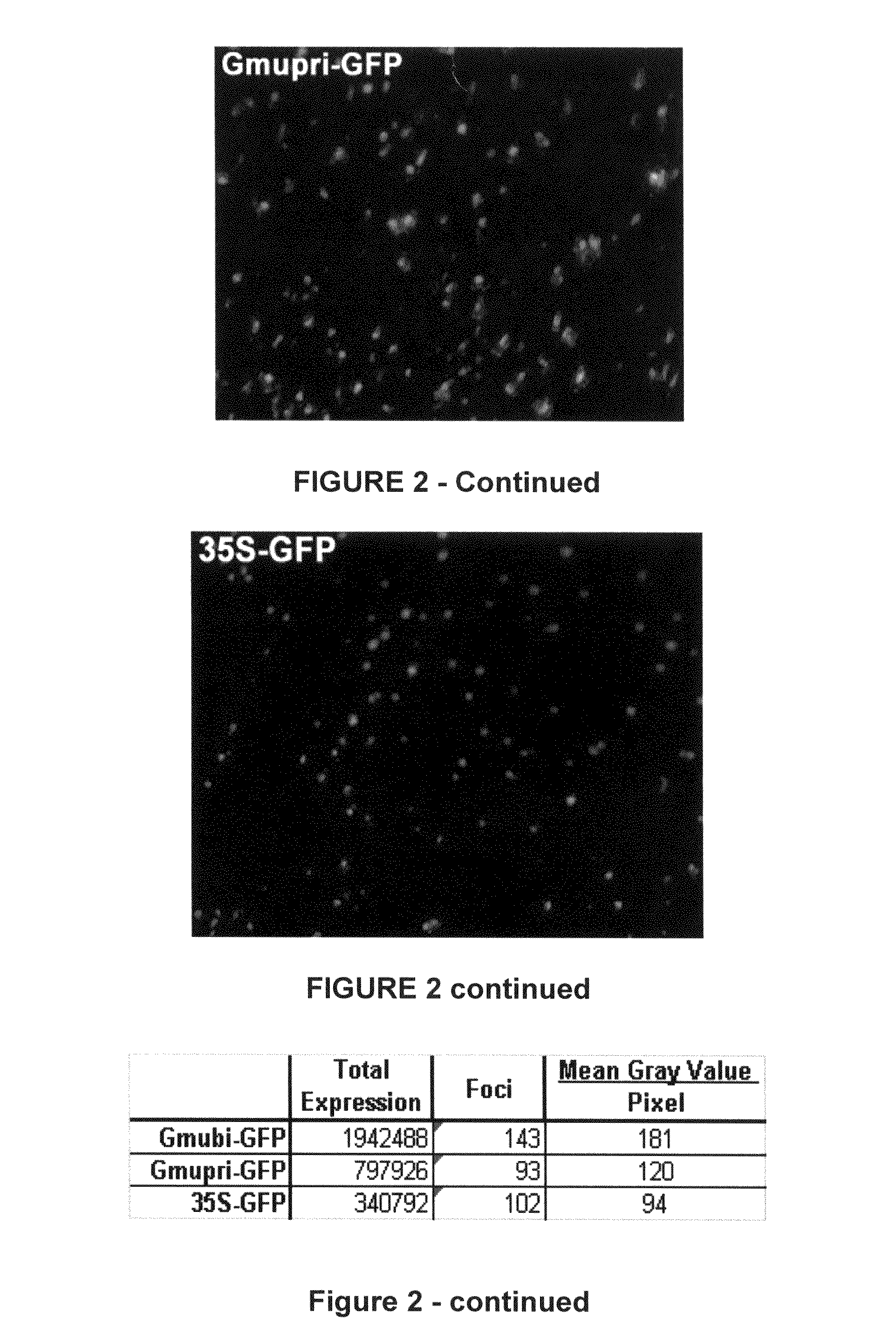Highly active soybean promoter from the SUBI-3 polyubiquitin gene and uses thereof
a polyubiquitin gene, high-active technology, applied in the field of plant promoters, can solve the problems of destroying samples, unable to follow gene expression in the same tissue, and difficult quantitative analysis of promoter strength and comparative analysis in stably transformed plants
- Summary
- Abstract
- Description
- Claims
- Application Information
AI Technical Summary
Benefits of technology
Problems solved by technology
Method used
Image
Examples
examples
Materials and Methods
[0125]Plasmid Constructs
[0126]Eight different promoter constructs were generated (FIG. 1). All promoters were placed upstream of a modified gfp gene (sGFP(S65T); Chiu et al. 1996). Two different forms of a soybean (Glycine max) polyubiquitin promoter were evaluated, along with 5 different forms of a soybean heat shock protein 90-like (GmHSP90L) promoter. The CaMV35S promoter was used as a standard.
[0127]The soybean (Glycine max) polyubiquitin promoter (Gmubi) was identified from GenBank submission D28123 (Glycine max SUBI-3). Based on similar motifs in this gene's 5′ region and those found in the maize polyubiquitin 1 promoter (Christensen et al. 1992; Ling et al. 1995), primers were designed to clone the entire 5′ UTR region of the D28123 sequence, adding a 5′ SphI site and a 3′ BamHI site to allow insertion of the promoter in front of the gfp gene.
[0128]The entire 5′ Gmubi fragment was amplified from soybean genomic DNA using the FailSafe™ PCR system (Epicentr...
example 2
Use of Novel Soybean Promoters to Regulate Gene Expression
[0177]Four different promoters from soybean have been identified and characterized which regulate or control expression of an introduced marker gene in soybean. One of these promoters (Gmubi) was partly cloned using PCR, based on known sequence information and similarities between a known maize promoter and soybean genomic sequence information. The remaining promoters were cloned based on microarray expression data and EST sequences. All of the promoters have been additionally modified by truncation and fusion with other promoter / regulatory regions to generate an array of promoters with different intensities and specificities of expression.
[0178]The Gmubi promoters shows much higher constitutive expression than the CaMV35S promoter, which is a promoter standard. Other promoters show root-specific expression and / or activity only in early-staged embryos.
[0179]These promoters are useful for regulating transgene expression. They ...
PUM
| Property | Measurement | Unit |
|---|---|---|
| time | aaaaa | aaaaa |
| time | aaaaa | aaaaa |
| temperature | aaaaa | aaaaa |
Abstract
Description
Claims
Application Information
 Login to View More
Login to View More - R&D
- Intellectual Property
- Life Sciences
- Materials
- Tech Scout
- Unparalleled Data Quality
- Higher Quality Content
- 60% Fewer Hallucinations
Browse by: Latest US Patents, China's latest patents, Technical Efficacy Thesaurus, Application Domain, Technology Topic, Popular Technical Reports.
© 2025 PatSnap. All rights reserved.Legal|Privacy policy|Modern Slavery Act Transparency Statement|Sitemap|About US| Contact US: help@patsnap.com



